- europages
- >
- COMPANIES - SUPPLIERS - SERVICE PROVIDERS
- >
- acetic acid
Results for
Acetic acid - Import export

W. ULRICH GMBH
Germany
is a clear, corrosive, flammable liquid with sour taste and scent. It is manufactured by fermentation of ethanol or carbonylation of methanol or oxidation of acethaldehyde. Mixed with water it is termed as vinegar for household applications. The acetic acid is in Europe and Asia for many centuries now used as seasoning. The discovery of it is estimated at 5000 BC. In nature the acetic acid can be found in saps or essential oils.
Request for a quote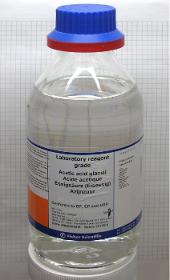
J.D.F. IMPORT-EXPORT GMBH
Germany
Acetic Acid is a colourless liquid organic compound with the chemical formula CH3COOH. It is also called glacial acetic acid when undiluted. Acetic acid is the main component of vinegar, and has a distinctive sour taste and pungent smell. In food preparation, Acetic Acid can be used as a flavouring and as a food preservative. The acid inhibits bacterial growth, keeping food safe from contamination. Industrially, acetic acid is used in a wide range of processes, including as a weak acid, a solvent, a reagent, a catalyst, and a pesticide, and can be used in the preparation of paints, varnishes and glazes.
Request for a quote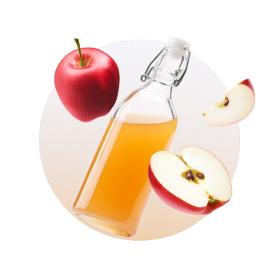
VEHGRO B.V
Germany
"Origin and history of apple cider vinegar Apple vinegar, also known as apple cider or apple cider vinegar, is a natural product (juice) made from fermented apples. It has been used for centuries as an effective preservative. More recently, apple cider vinegar has become popular because of its amazing health benefits Production Process, Harvest or Processing Apple Cider Vinegar The apples are milled creating a liquid that is mixed with yeast to start the process of alcoholic fermentation. The sugars are converted into alcohol. At the same time, acetic acid bacteria ensure that the created alcohol is converted into vinegar. In the final apple cider vinegar is thus no alcohol. Healthy properties Apple Cider Vinegar and applications Apple vinegar can be used in various ways, both internally and externally. It is besides a delicious addition to a salad or vegetable also good for the body. Apple cider vinegar can help to keep the skin supple and soft…"
Request for a quoteDo you sell or make similar products?
Sign up to europages and have your products listed

JUST DIFFERENT PEOPLE,S.L.
Spain
Calcium acetate is a calcium salt derived from acetic acid, notable for its white or crystalline powder appearance and its solubility in water. This compound is mainly used as an anticoagulant agent in the treatment of hyperphosphatemia, a common condition in patients with chronic kidney disease, as it helps reduce phosphate levels in the blood by forming insoluble compounds that are eliminated from the body. In addition, calcium acetate is used in the food industry as a stabilizer and preservative, as well as in the production of vinegar from acetic acid and as a precursor in the synthesis of other chemical products. Its versatility and effectiveness in various applications make calcium acetate a valuable compound in multiple fields, from medicine to the food industry.
Request for a quote
GERBU BIOTECHNIK GMBH
Germany
Application: Ingredient Product group: Buffers CAS-Nr.: [26239-55-4][150-25-4] Storing temperature: 10-25°C GHS pictogram: GHS07 EINECS: 205-755-1 Assay: >99.0% Shipping condition: ambient Synonym: N,N-Bis(2-hydroxyethyl) glycine IUPAC: 2-(Bis(2-hydroxyethyl)amino)acetic acid Appearance: white crystalline powder MW: 163.17 g/mol UNSPSC-No: 12161703 Formula: C6H13NO4
Request for a quote
DE SMET ENGINEERS & CONTRACTORS
Belgium
Thanks to its deep knowledge of all unitary operations related to edible oil, sugar and sugar fermentation processes, De Smet Engineers & Contractors is the ideal partner for assisting investors in developing and implementing biochemical production plants and bio-commodities production facilities. DSEC has already successfully built for international key players a betain and several inulin plants based on their proprietary knowhow. Moreover, DSEC’s experience in implementing cogeneration units built along with facilities for the production of fermentable grade sugar (derived from sugar beet, cane and grains) allows the company to fine-tune the overall process set-up in order to achieve ideal conditions with regard to material and energy flows. Notable examples of bio-based chemicals include non food starch, cellulose fibers and cellulose derivates, tall oils, fatty acids and fermentation products such as ethanol and citric acid for which. DSEC is fully qualified to provide the facility that will efficiently generate the required feedstock on an industrial scale. From a technical point of view, almost all industrial materials respectively their building blocks made from fossil resources can be substituted by their bio-based counterparts: • C2 building blocks: ethanol, acetic acid • C3 building blocks: lactic acid, 3-hydroxypropanoic acid, glycerol • C4 building blocks: fumaric acid, succinic acid, butyric acid, 1-butanol • C5 building blocks: itaconic acid, furfural • C6 building blocks: citric acid, glucaric acid, 5-HMF, adipic acid
Request for a quote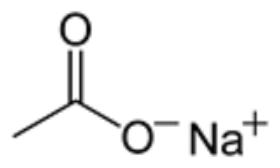
W. ULRICH GMBH
Germany
is a sodium salt of acetic acid and is obtained through the reaction of acetic acid with sodium compounds. It is a colourless salt with a light acetic scent, easily soluble in water and hardly soluble in alcohol. Crystallization of saturated sodium acetate solution releases heat.
Request for a quote
W. ULRICH GMBH
Germany
is an ester of the acetic acid and ethanol. That is why it has also following names: Acetic acid ethyl ester or acetic ester. It can also be obtained from acetaldehyde. For the industrial use ethyl lactate is obtained from lactic acid. Mostly processed by fermentation of sugar. Therefore it is a salt of lactic acid. The chemical term for the substance is ethyl (S)-2-hydroxypropionate. The product is a clear liquid, smelling like glue. It is easily soluble in water and organic substances. The dangerous goods term is UN 1192 Ethyllactat,3,III,(D/E). The product is availabe for the food (FCC) and technical sector. In this product sector we work together with the european manufacturers Corbion / Purac (Purasol ® ) and Galactic (Galaster ™).
Request for a quote
RASIN IT (INTERNATIONAL TRADING) GMBH
Austria
Plant parts: Fruits Cultivation mode: Wild collection\Cultivated In manufacturing: Pharmaceutical, Cosmetic, Sap, Molasses, Ethanol, Liquid sugar, Dough, Compote, Chocolate, Industrial alcohol, Marmalade, Powder, Pickles, Colas, Dairy, Acetic acid, Citric acid, Acetone, Butanol, Gluconic acid, Confectionary, Vinegar, Chips, Jam, Poultry and livestock feed, Oil, Extract. In food: Eaten along tea, Cookies.
Request for a quote
LANXESS
United Kingdom
acetic anhydride, methyldiethanolamine, Ethanolamine, Triethanolamine, TEA, Monoethanolamine, MEA, Diethanolamine, DEA, Bromine, Calcium carbonate, Chlorine, Fluorine, Hydrogen chloride, Hydrogen fluoride, Hydrogen peroxide, Iodine, Nitric acid, Oxygen, nitrogen and the rare gases, Phosphoric acid, Phosphorus, Sodium carbonate, Sodium hydroxide, Sulfur, Sulfuric acid, Titanium dioxide, Benzene and methylbenzenes, Epoxyethane, Ethylene oxide, Ethylene glycol, Ethanoic acid, Acetic acid, Ethanol, Ethene, Ethylene, Methanal, Formaldehyde, Methanol, Methyl tertiary-butyl ether, Phenol, Propanone, Acetone, Propene, Propylene, Urea, Polymers, Pharmaceuticals, Inorganic chemicals, Miscellaneous Chemicals, Organic chemicals and derivatives, Food and feed additives, Fragrances and aroma chemicals, Dyestuffs and pigments, Coating and Adhesives, Catalysts & Chemical Auxiliary Agents, Agrochemicals
Request for a quote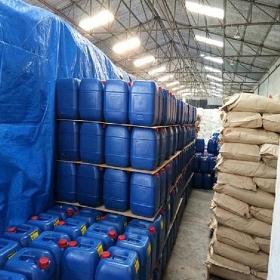
LANXESS
United Kingdom
Ammonia, methyldiethanolamine, Ethanolamine, Triethanolamine, TEA, Monoethanolamine, MEA, Diethanolamine, DEA, Bromine, Calcium carbonate, Chlorine, Fluorine, Hydrogen chloride, Hydrogen fluoride, Hydrogen peroxide, Iodine, Nitric acid, Oxygen, nitrogen and the rare gases, Phosphoric acid, Phosphorus, Sodium carbonate, Sodium hydroxide, Sulfur, Sulfuric acid, Titanium dioxide, Benzene and methylbenzenes, Epoxyethane, Ethylene oxide, Ethylene glycol, Ethanoic acid, Acetic acid, Ethanol, Ethene, Ethylene, Methanal, Formaldehyde, Methanol, Methyl tertiary-butyl ether, Phenol, Propanone, Acetone, Propene, Propylene, Urea, Polymers, Pharmaceuticals, Inorganic chemicals, Miscellaneous Chemicals, Organic chemicals and derivatives, Food and feed additives, Fragrances and aroma chemicals, Dyestuffs and pigments, Coating and Adhesives, Catalysts & Chemical Auxiliary Agents, Agrochemicals
Request for a quote
LANXESS
United Kingdom
Epoxyethane, Ethylene oxide, Ethylene glycol, Ethanoic acid, Acetic acid, Ethanol, Ethene, Ethylene, Methanal, Formaldehyde, Methanol, Methyl tertiary-butyl ether, Phenol, Propanone, Acetone, Propene, Propylene, Urea, Polymers, Pharmaceuticals, Inorganic chemicals, Miscellaneous Chemicals, Organic chemicals and derivatives, Food and feed additives, Fragrances and aroma chemicals, Dyestuffs and pigments, Coating and Adhesives, Catalysts & Chemical Auxiliary Agents, Agrochemicals
Request for a quote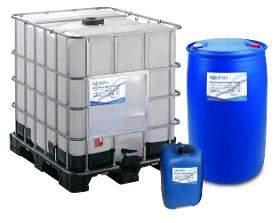
LANXESS
United Kingdom
methyldiethanolamine, Ethanolamine, Triethanolamine, TEA, Monoethanolamine, MEA, Diethanolamine, DEA, Bromine, Calcium carbonate, Chlorine, Fluorine, Hydrogen chloride, Hydrogen fluoride, Hydrogen peroxide, Iodine, Nitric acid, Oxygen, nitrogen and the rare gases, Phosphoric acid, Phosphorus, Sodium carbonate, Sodium hydroxide, Sulfur, Sulfuric acid, Titanium dioxide, Benzene and methylbenzenes, Epoxyethane, Ethylene oxide, Ethylene glycol, Ethanoic acid, Acetic acid, Ethanol, Ethene, Ethylene, Methanal, Formaldehyde, Methanol, Methyl tertiary-butyl ether, Phenol, Propanone, Acetone, Propene, Propylene, Urea, Polymers, Pharmaceuticals, Inorganic chemicals, Miscellaneous Chemicals, Organic chemicals and derivatives, Food and feed additives, Fragrances and aroma chemicals, Dyestuffs and pigments, Coating and Adhesives, Catalysts & Chemical Auxiliary Agents, Agrochemicals
Request for a quoteResults for
Acetic acid - Import exportNumber of results
16 ProductsCompany type

